René Magritte
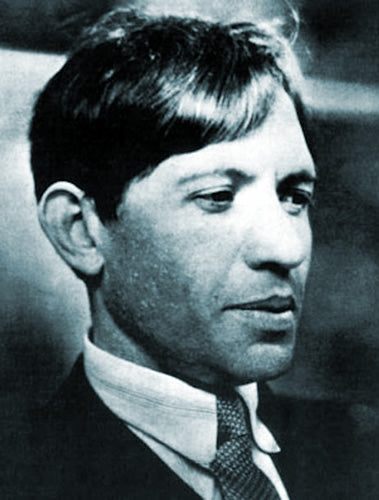
| Full name | René François Ghislain Magritte. |
|---|---|
| Artistic name | René Magritte. |
| Birth | 1898, Lessines, Belgium. |
| Death | 1967, Schaerbeek, Belgium. |
| Style | Surrealism and Modernism |
| Highlighted work | The Son of Man |
Magritte's life was marked by tragedies and complicated environments, such as his mother's suicide and World War II, which significantly shaped his thinking and artistic work.
Regarding his personality, he was known for being: playful and imaginative in his youth; eccentric, provocative, and egocentric in his older age. Masterful with the brush, Magritte forged a very particular catalog of works, reminiscent of the style developed by Dalí, though less grandiloquent.
Eager to be someone, Magritte embarked on various artistic movements, finding his comfort zone in Surrealism. Although initially he joined the surrealist manifesto (1940s) of the founders, he did not find fame until later, in the 1960s, when his works gained popularity in the United States, becoming highly influential in modern movements such as Pop Art and New York conceptual art. © diCrox.
Magritte's Paintings
Magritte's works are often recognizable at first glance, as he was prolific in using recurring motifs, some of which are: green apples, covered faces, bowler hats, and the artist himself portrayed in a thousand ways.
-
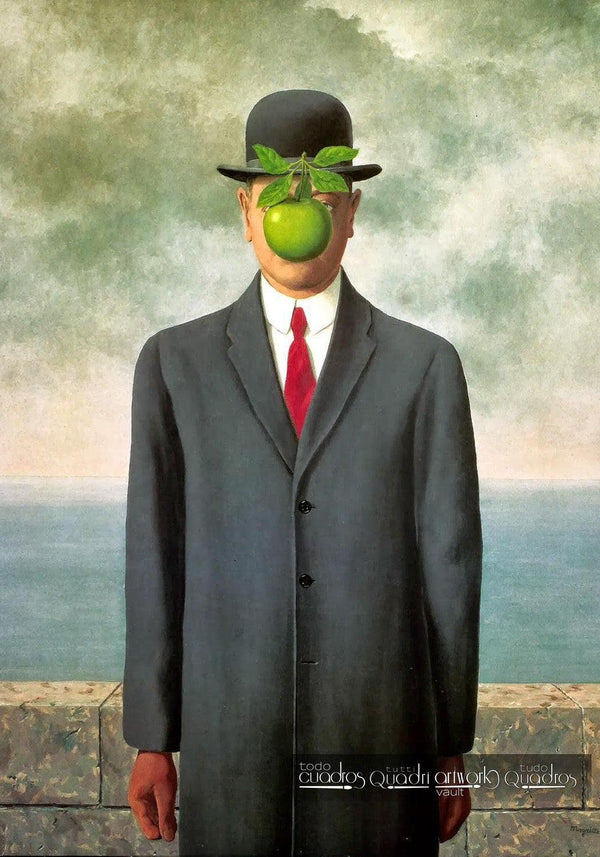
Author: René MagritteYear: 1964Style: SurrealismOriginal Title: Le Fils de l'hommeTitle (English): The Son of ManType: PaintingTechnique: OilSupport: CanvasLocation: Private collection
Undoubtedly, this is the artist's most famous work, extensively reproduced in all kinds of printed decorations such as posters and others. According to some experts, the great success of this figure lies in the originality contained in the simplicity of the figure, to which is added the complexity of the concept "Son of Man."
The meanings of a great number of elements come into play, the main ones being the biblical story of Adam's apple and contemporary life in Europe at that time, the latter evident in the character's attire.
-
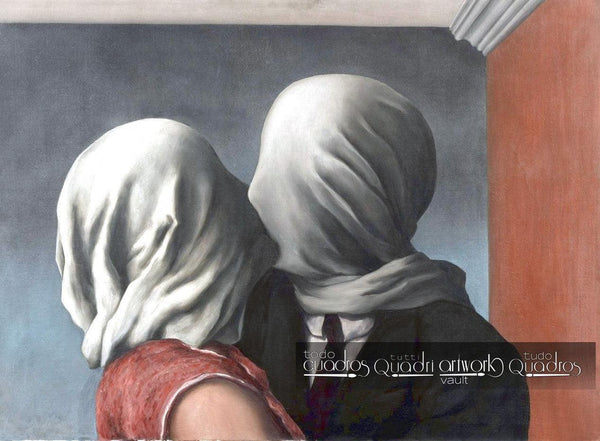
Author: René MagritteYear: 1928Style: SurrealismOriginal Title: Les AmantsTitle (English): The LoversType: PaintingTechnique: OilSupport: CanvasLocation: National Portrait Gallery, Australia
This enigmatic work shows a man and woman kissing, but without touching or seeing each other. In this act, communication between the couple is really hindered by a barrier that prevents feeling, touching, or seeing each other, in addition to speaking with difficulty and hearing little.
Some biographers attribute these figures to the coexistence of the artist's parents, the marked disaffection of the father and the mother's depression.
-
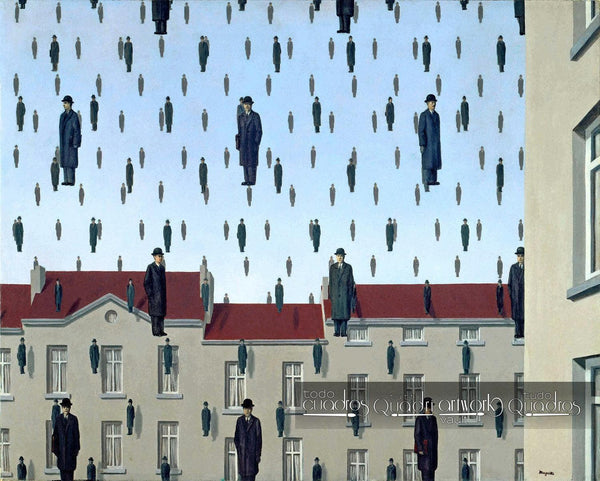
Author: René MagritteYear: 1953Style: SurrealismOriginal Title: GolcondeType: PaintingTechnique: OilSupport: CanvasLocation: in the private collection of the Menil Collection, Houston, USA
The "official" interpretation of this surrealistic composition by the artist is not known, but there has been much speculation about its meaning. What is certain is that the work is autobiographical, as it shows a Belgian-style building, and the characters are clearly characterized in the way Magritte appeared in real life.
"Raindrops in the shape of the artist himself, who is everywhere," is one of the most widespread interpretations. He always tried to establish a dividing line between the real and the representational, often boasting that his painting was more playful than formal.
-
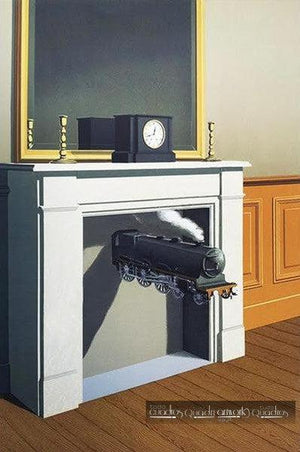
Author: René MagritteYear: 1938Style: SurrealismOriginal Title (French): La Durée PoignardéeTitle (English): Time TransfixedType: PaintingTechnique: OilSupport: CanvasLocation: Art Institute of Chicago, USA
This enigmatic work, the second that the artist gifted to his benefactor, the British poet and surrealist lover Edward James, who frequently invited Magritte to his London home. This painting was placed above the fireplace in that house.
-

Author: René MagritteYear: 1927Style: SurrealismOriginal title: L'Assassin menacéEnglish title: The Menaced AssassinType: PaintingTechnique: OilSupport: CanvasLocated at: MoMA Museum, New York.
One might think that the inspiration for this work comes from a literary passage, or even a movie, but it is not. It is a composition that the artist conjured from thin air, and thanks to the very elucidating title, one can understand the event unfolding in it.
A "white-glove" assassin is about to be caught, surrounded and caught red-handed, seemingly indifferent or unaware that his captors are about to act. These latter characters are marked by the classic bowler hat, indicating a psychological closeness between the artist and the characters.
-
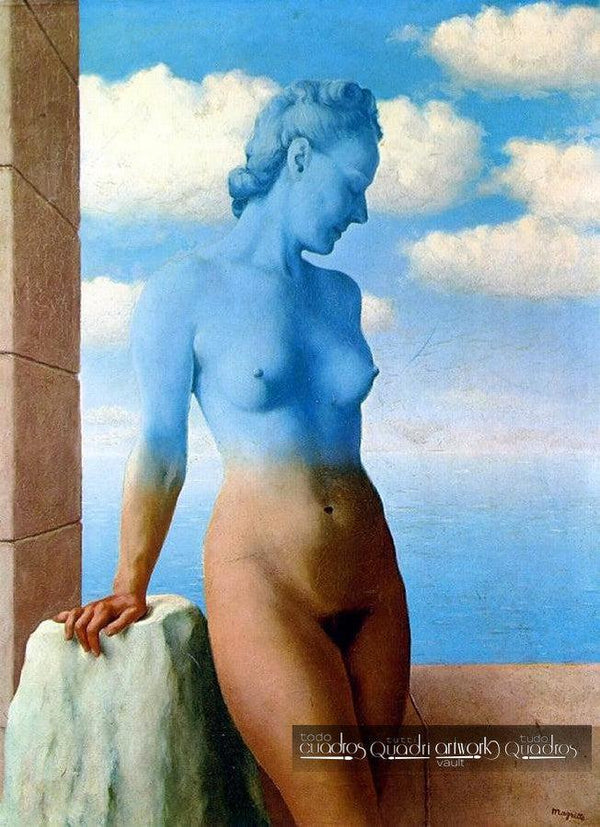
Author: René MagritteYear: 1945Style: SurrealismOriginal title: La magie noirEnglish title: Black MagicType: PaintingTechnique: OilSupport: CanvasLocated at: Private collection
Approaching his fifties, Magritte had by then accumulated a wealth of experience and academic training in painting. This female nude is a portrait of his own wife, Georgette Berger, created following the golden ratio of classical beauty, giving it the appearance of a perfect sculpture and undeniable beauty.
The celestial blue coloring confirms the creative and surrealistic character of the canvas: a woman merging with the sky, but with one hand on a stone, symbolizing her belonging to the earth.
-
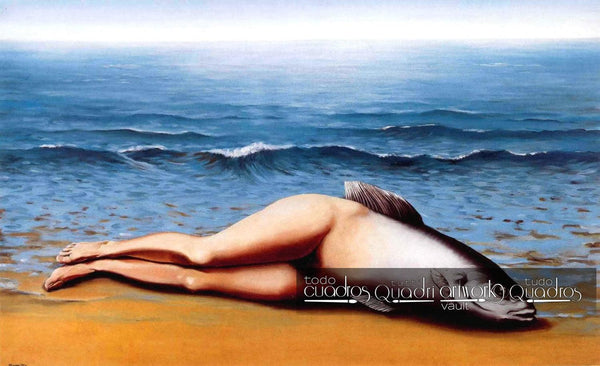
Author: René MagritteYear: 1934Style: SurrealismOriginal Title: L'invention collectiveTitle (English): Collective InventionType: PaintingTechnique: OilSupport: CanvasLocation: Kunstsammlung Nordrhein-Westfalen Museum, Germany
The canvas presents a disconcerting image, intended to make the viewer aware of the preconceived ideas they have without realizing it. In this case, the idea of a "mermaid," ingrained in the collective imagination, becomes implausible, though undoubtedly no less so than the traditional mermaid, which is a "collective invention" with no reality to it.
-
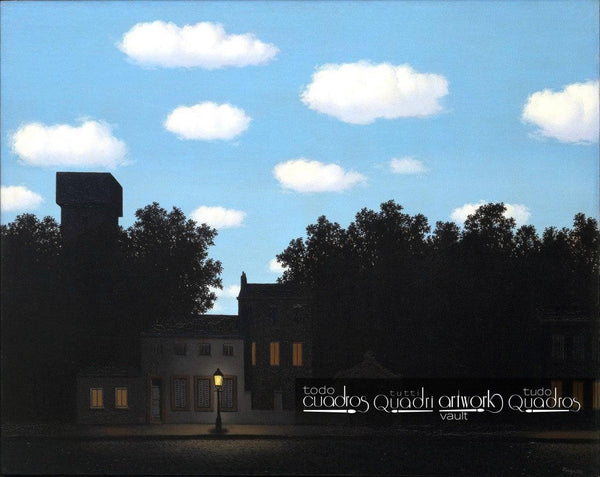
Author: René MagritteYear: 1950Style: ModernismOriginal Title: L'Empire des lumières IITitle (English): The Empire of Light IIType: PaintingTechnique: OilSupport: CanvasLocation: MoMA Museum, New York
The painter creates an atmosphere of contradictory light, yet it verges on reality. A chiaroscuro is presented by a sky-blue sky, well-lit and filled with fluffy clouds that seem like cotton; below, a house in the shadows, with darkness generated precisely by the backlighting of the figures and the light from the sky itself. It gives the impression that it's the trees and the building that create such a stark contrast.
-
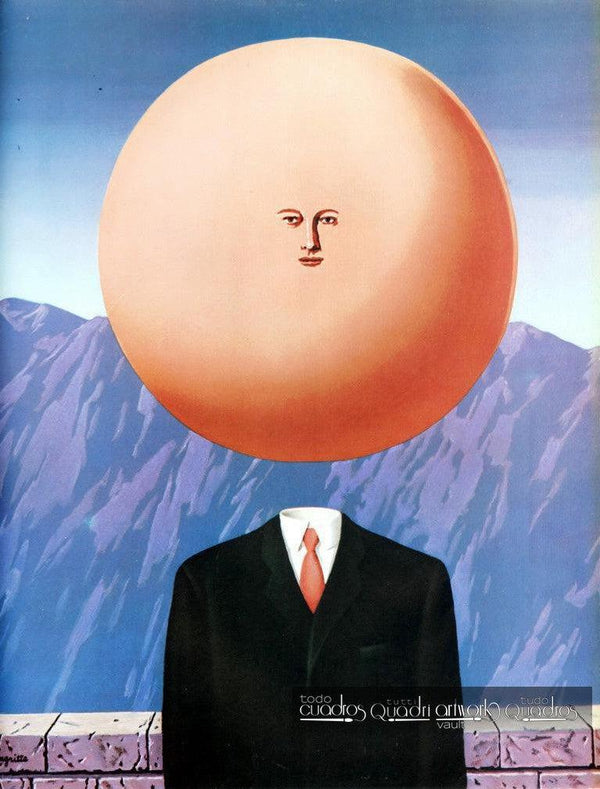
Author: René MagritteYear: 1967Style: SurrealismOriginal Title: L'Art de VivreTitle (English): The Art of LivingType: PaintingTechnique: OilSupport: CanvasLocation: Private collector
Although not one of the most well-known paintings, it holds a significant psychological meaning linked to the painter. The main character, very similar to "The Son of Man", is presented with characteristics that reveal the beliefs and ideas the artist had about life, including: his agnosticism, his egocentrism; his confidence in the communist system and in human reason.
The inflated head, detached from the shoulders, acting as only a foreground in front of the mountains, denotes the superiority of reason over any other force or moral.
-
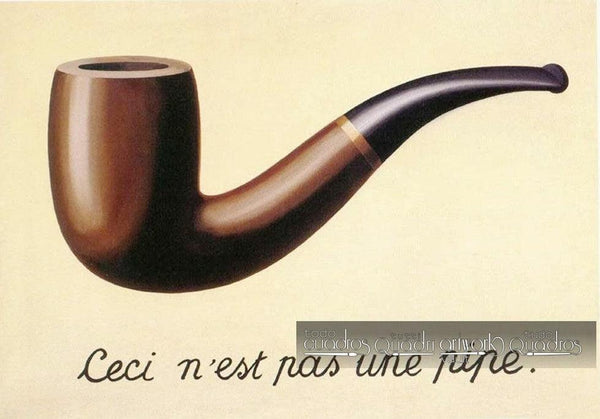
Author: René MagritteYear: 1929Style: SurrealismOriginal Title: La Trahison des imagesTitle (English): The Treachery of ImagesAlso known as: "This is not a pipe"Type: PaintingTechnique: OilSupport: CanvasLocation: Los Angeles County Museum of Art
In the work, it reads "Ceci n'est pas une pipe", meaning "this is not a pipe." This was the artist's assertion with this work, arguing that it really was not a pipe, but merely the image of a pipe. This simple argument, which reinforces the division between reality and image, was used to justify much of his work, especially those more outlandish and surreal paintings.
-
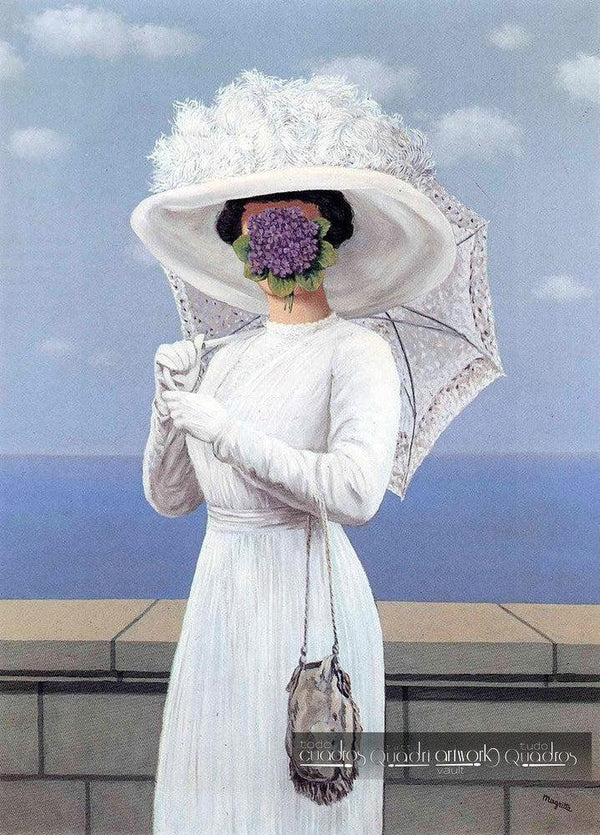
Author: René MagritteYear: 1964Style: SurrealismOriginal Title: La Grande GuerreTitle (English): The Great WarType: PaintingTechnique: OilSupport: CanvasLocation: Private collection
Against a backdrop of a stone fence and a smooth sky, very similar to the background of many other Magritte paintings, including "The Son of Man" and "The Art of Living". Only this time, the character is completely disconcerting, a woman dressed entirely in white, in the fashion of the time, with an umbrella, purse, and purple flowers with green leaves in place of a face. Undoubtedly enigmatic, what connection could the artist have found between this character and the war? We must not forget that Magritte lived through both World War I and II, so he knew exactly what he was doing in connecting them.
He wanted to portray her as an attractive lady with a hidden face, possibly alluding to one of the darker sides of war, namely the material wealth that war brings to some businesses.
-
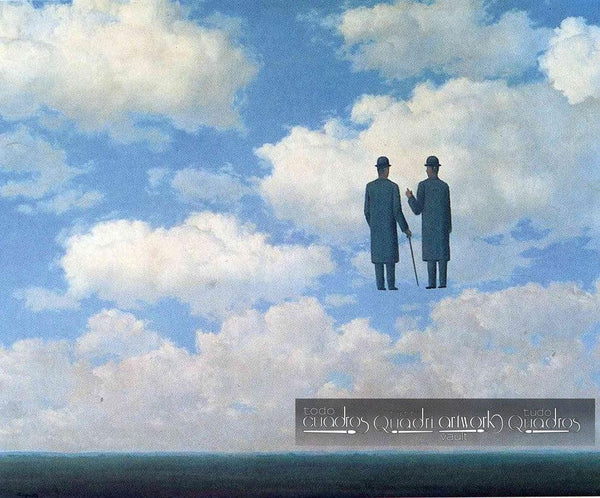
Author: René MagritteYear: 1963Style: SurrealismOriginal Title (French): La reconnaissance infinieTitle (English): The Infinite RecognitionType: PaintingTechnique: OilSupport: CanvasLocation: In private hands
This might be the most transcendental painting known of him, not by chance could he have been thinking about death or the afterlife, as he was 68 years old at the time, an age considered quite an achievement to reach back then; indeed, he died three years later.
Two main concepts are represented here: the twin characters of the soul and the infinity of the sky. Both in some way float and converse while "ascending" to a higher state, where they can continue sharing.
Order it in the section of Magritte oil paintings
Related famous painters:
↑Back to top
